Too much info? Go straight to my protocol by scrolling down- just before "Definitions".

A month ago, I turned fifty and I’m still celebrating! You don’t know how your going to feel or who you’ll be with for that landmark birthday, but it has been special and I had no idea turning fifty would be so fun! However, as a woman turning fifty my body is definitely changing, even though I am not technically in menopause (I still menstruate regularly) and according to my blood tests I am not even perimenopausal.
However, changes are occurring and most notable during this past year was the frequency of night sweats disturbing my sleep. Clear, odorless sweat would pool on my chest and soak the nape of my neck. Waking up in the middle of the night in a cold sweat became a super drag.
I remember my first night sweat about eight years ago and they progressed, randomly since, sometimes even skipping a year or months at a time. Having a night sweat was actually kind of novel, at first. Sometimes I would get up for a hand towel to dry off or just roll over to the other side of the bed where the sheets were dry, fall back to sleep and wake in the morning completely dry.
In the last few years, though, this routine got to the point that if I sensed a pattern, I would sleep in a thin t-shirt and have an extra t-shirt at the side of the bed. Peeling off a cold wet t-shirt in the middle of the night was kind of gross, but having a dry shirt handy was the answer to warming up and falling back to sleep quickly.
During my 47th and 48th year, the night sweats occurred more often until about mid-way through my 49th year. Suddenly the frequency and intensity came with a new force that sometimes I would have to change my shirt three or four times a night. Yikes! This prompted me to start sleeping with a few extra t-shirts next to my bed, just in case. Ultimately, I decided the t-shirt was just creating an eventual cold scenario and not wearing a shirt was the more comfortable. Instead, I laid on a terry cloth bath towel and placed a terry cloth hand towel flat against my chest. This actually worked for comfort as the terry cloth never got soaked and felt warm and dry. I did this set up three or four times and knew I had to find an answer. I laughed after a friend and I were sharing notes and she revealed she slept in a terry cloth robe! Even still, terry cloth was no real solution to the annoyance.
Night sweats had officially become a nuisance and disturbance to my sleep. I was feeling tired during the day and the stress started mounting. My night sweat had always been clear and completely odorless to the point that I would marvel at how fresh my shirt smelled the next morning. I attributed it to perimenopause and listened closely when my friends would describe similar stories or even commiserate about hot flashes- something I feel lucky not to have experienced and hope I never will. But there is nothing lucky about night sweats as they seriously interrupt a good nights sleep.
Right before I turned fifty, however, the nature of my sweat changed. I wouldn’t call it a bad odor and nothing like BO, but my shirts did not smell completely fresh the next morning. Then I noticed my sheets and pillow cases were tinged with an orangish yellow color from the sweat- WTF! I started to wonder what was going on with my nervous system and body in general as my internet searches indicated all night sweats are some form of detox, menopausal, disease or otherwise. One thing I knew for sure is that I was stressed out and I needed to take action.
All of my internet searches for my symptoms brought forth particular anti-stress herbs that happened to be in my pantry! I hadn’t linked my night sweats to stress and hadn’t taken the herbs ashwagadha and triphala for a while. Luckily, they were on hand, so I started taking these adaptogen and balancing herbs, but learned they shouldn’t necessarily be taken together like I had been doing. I refined my protocol according to newly learned directives taking triphala in the morning (as it is indicated to take on an empty stomach) and ashwagandha at night (as it is indicated to help with sleep).
Around the same time, I mentioned to a friend that my libido had tanked and he suggested shatavari to the rescue. I looked it up and saw “The Queen Of Herbs” was also recommended for night sweats and menopausal symptoms and immediately ordered the powder off the internet.
Up until two months ago, I was experiencing night sweats regularly throughout each month, particularly around my moon (I am exactly regular in my menstrual cycle). Within the first month of taking these herbs my night sweats subsided.
I mixed 1 tsp shatavari and 1/2 tsp of triphala with a couple of ounces of hot water first thing in the morning. Shatavari is an excellent herb for cleansing the gut, like triphala, so it made sense to take them together. Before bed I take 1/2 tsp ashwagandha with a couple ounces of hot water.
However, changes are occurring and most notable during this past year was the frequency of night sweats disturbing my sleep. Clear, odorless sweat would pool on my chest and soak the nape of my neck. Waking up in the middle of the night in a cold sweat became a super drag.
I remember my first night sweat about eight years ago and they progressed, randomly since, sometimes even skipping a year or months at a time. Having a night sweat was actually kind of novel, at first. Sometimes I would get up for a hand towel to dry off or just roll over to the other side of the bed where the sheets were dry, fall back to sleep and wake in the morning completely dry.
In the last few years, though, this routine got to the point that if I sensed a pattern, I would sleep in a thin t-shirt and have an extra t-shirt at the side of the bed. Peeling off a cold wet t-shirt in the middle of the night was kind of gross, but having a dry shirt handy was the answer to warming up and falling back to sleep quickly.
During my 47th and 48th year, the night sweats occurred more often until about mid-way through my 49th year. Suddenly the frequency and intensity came with a new force that sometimes I would have to change my shirt three or four times a night. Yikes! This prompted me to start sleeping with a few extra t-shirts next to my bed, just in case. Ultimately, I decided the t-shirt was just creating an eventual cold scenario and not wearing a shirt was the more comfortable. Instead, I laid on a terry cloth bath towel and placed a terry cloth hand towel flat against my chest. This actually worked for comfort as the terry cloth never got soaked and felt warm and dry. I did this set up three or four times and knew I had to find an answer. I laughed after a friend and I were sharing notes and she revealed she slept in a terry cloth robe! Even still, terry cloth was no real solution to the annoyance.
Night sweats had officially become a nuisance and disturbance to my sleep. I was feeling tired during the day and the stress started mounting. My night sweat had always been clear and completely odorless to the point that I would marvel at how fresh my shirt smelled the next morning. I attributed it to perimenopause and listened closely when my friends would describe similar stories or even commiserate about hot flashes- something I feel lucky not to have experienced and hope I never will. But there is nothing lucky about night sweats as they seriously interrupt a good nights sleep.
Right before I turned fifty, however, the nature of my sweat changed. I wouldn’t call it a bad odor and nothing like BO, but my shirts did not smell completely fresh the next morning. Then I noticed my sheets and pillow cases were tinged with an orangish yellow color from the sweat- WTF! I started to wonder what was going on with my nervous system and body in general as my internet searches indicated all night sweats are some form of detox, menopausal, disease or otherwise. One thing I knew for sure is that I was stressed out and I needed to take action.
All of my internet searches for my symptoms brought forth particular anti-stress herbs that happened to be in my pantry! I hadn’t linked my night sweats to stress and hadn’t taken the herbs ashwagadha and triphala for a while. Luckily, they were on hand, so I started taking these adaptogen and balancing herbs, but learned they shouldn’t necessarily be taken together like I had been doing. I refined my protocol according to newly learned directives taking triphala in the morning (as it is indicated to take on an empty stomach) and ashwagandha at night (as it is indicated to help with sleep).
Around the same time, I mentioned to a friend that my libido had tanked and he suggested shatavari to the rescue. I looked it up and saw “The Queen Of Herbs” was also recommended for night sweats and menopausal symptoms and immediately ordered the powder off the internet.
Up until two months ago, I was experiencing night sweats regularly throughout each month, particularly around my moon (I am exactly regular in my menstrual cycle). Within the first month of taking these herbs my night sweats subsided.
I mixed 1 tsp shatavari and 1/2 tsp of triphala with a couple of ounces of hot water first thing in the morning. Shatavari is an excellent herb for cleansing the gut, like triphala, so it made sense to take them together. Before bed I take 1/2 tsp ashwagandha with a couple ounces of hot water.
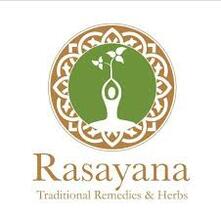
Another piece to this puzzle is that I had a low back attack in December, just a few months ago, during the peak of these night sweats. As a yoga teacher, hiker, and all around physically active person, my body has weathered the aches and pains that go along with constant physical activity. Yet, another change in the last few years had been that my joints flared up with major discomfort (another symptom associated to menopause). I had a patellar cartilage tear in my knee, an avulsion in my pinky, bursitis in my elbow along with chronic neck pain. A couple of times I had a low back attack, but nothing like the one in December. An x-ray in January revealed I had spinal degenerative disc disease and a potential kidney stone. Whoa, whoa, whoa...what!?
I took a urine analysis and the possibility of a kidney stone was negative, but I had already begun researching kidney stone on the internet and Traditional Chinese Medicine (TCM) links came up first. Delving into those TCM sites brought forth a plethora of low qi symptoms that I related to, symptoms like: blurry vision, low libido, tinnitus (minimal but existent), low back pain, digestive issues, teeth issues, joint and arthritis pain, NIGHT SWEATS, hot flashes, sleeping issue- either trouble getting to sleep or waking up, depression... well, night sweats caught my attention and so did everything else! Suddenly, I felt like I had an answer.
This is where things got interesting. The more I researched my overall symptoms, menopause, and night sweats on the internet the same Ayurvedic herbal recommendations kept coming up: ashwagandha, triphala, shatavari- all of which are referred to as Rasayana herbs for their wide ranging health benefits. Among the Ayurvedic Rasayana herbs, Ashwagandha holds the most prominent place. Triphala is classified as a tridoshic rasayana, meaning that the energetics are appropriate for Vata, Pitta, and Kapha doshas or all types of patients. Shatavari, also known as Asparagus racemosus- a well known Ayurvedic rasayana which prevents aging, increases longevity, imparts immunity, improves mental function, vigor and adds vitality.
I took a urine analysis and the possibility of a kidney stone was negative, but I had already begun researching kidney stone on the internet and Traditional Chinese Medicine (TCM) links came up first. Delving into those TCM sites brought forth a plethora of low qi symptoms that I related to, symptoms like: blurry vision, low libido, tinnitus (minimal but existent), low back pain, digestive issues, teeth issues, joint and arthritis pain, NIGHT SWEATS, hot flashes, sleeping issue- either trouble getting to sleep or waking up, depression... well, night sweats caught my attention and so did everything else! Suddenly, I felt like I had an answer.
This is where things got interesting. The more I researched my overall symptoms, menopause, and night sweats on the internet the same Ayurvedic herbal recommendations kept coming up: ashwagandha, triphala, shatavari- all of which are referred to as Rasayana herbs for their wide ranging health benefits. Among the Ayurvedic Rasayana herbs, Ashwagandha holds the most prominent place. Triphala is classified as a tridoshic rasayana, meaning that the energetics are appropriate for Vata, Pitta, and Kapha doshas or all types of patients. Shatavari, also known as Asparagus racemosus- a well known Ayurvedic rasayana which prevents aging, increases longevity, imparts immunity, improves mental function, vigor and adds vitality.
Completely inspired, I kept taking the three Ayurvedic herbs and by the end of February I hadn’t experience a night sweat. However, I kept researching TCM and that led me to an obscure Chinese herb called eucommia, yet, I was already familiar with eucommia! I had taken it for my knee pain the year prior and raved that it was derived from the “rubber tree” plant in China that claimed to fortify your bones, joints, and tendons with a latex quality. Wow! I remember the first article about eucommia had the tagline, “Great for athletes and yoga teachers.” At that time I was suffering a tear in my patellar cartilage that had occurred just from kneeling on the floor too long. Patellar tears can take up to 9 months to heal and mine did take that long, but when I added eucommia into my diet during the last few months of that time period, I felt my healing accelerated. I noticed the ridges in my fingernails smoothed out and I felt stronger. The pain in my knee went away.
Learning about eucommia enlightened me to the importance of focusing on the skeletal system. I always focused on the liver, the heart, or digestion, but my achy joints were a wake up call and reminder that the skeletal system is where we make our red and white blood cells, the foundation of our immunity. The skeleton serves six major functions: support, movement, protection, production of blood cells, storage of minerals and endocrine regulation. I was surprised to remember our bones regulate our hormones and then it made sense that bone fortifying herbs were coming up in my search to ease menopause, as the skeletal system seems to be compromised by this time of hormonal change.
I continued to research the benefits of eucommia herb and TMC and discovered two new Chinese herbs were recommended as well: dipsacus and drynaria, respectively known as teasel and go sui bu. Aside from bone fortifying and regenerating qualities, these two herbs also deal with pain and that caught my attention right away.
Learning about eucommia enlightened me to the importance of focusing on the skeletal system. I always focused on the liver, the heart, or digestion, but my achy joints were a wake up call and reminder that the skeletal system is where we make our red and white blood cells, the foundation of our immunity. The skeleton serves six major functions: support, movement, protection, production of blood cells, storage of minerals and endocrine regulation. I was surprised to remember our bones regulate our hormones and then it made sense that bone fortifying herbs were coming up in my search to ease menopause, as the skeletal system seems to be compromised by this time of hormonal change.
I continued to research the benefits of eucommia herb and TMC and discovered two new Chinese herbs were recommended as well: dipsacus and drynaria, respectively known as teasel and go sui bu. Aside from bone fortifying and regenerating qualities, these two herbs also deal with pain and that caught my attention right away.
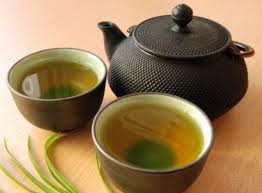
I am already taking D3-k2, iodine, and magnesium on a regular basis after a mammogram scare a few years prior, and that is another pertinent story. I only mention it because those supplements are keystone building blocks to this process, as well. In the same vain as I write this blog, I wrote Needless Biopsies ~ How I changed My Mammogram And Avoided A Surgical Breast Biopsy again, sharing my experience in hope of helping others with a like situation.
And what is this process? I’ve hustled to catch up and am learning women need to prepare for menopause. Or is it just the western woman? Just as I point out in my Needless Biopsies blog, Asian women fair differently from Western women in breast cancer statistics, as they do in menopause statistics. Apparently, the phase of menopause is relatively unknown in Asia and the Chinese and Japanese don’t have a word for it.
Menopause
The word “menopause” isn’t even in the traditional Chinese medical vocabulary. Actually, TCM calls the various symptoms that some women experience when their cycle ends simply “menstrual cycle ending symptoms.” So you may be surprised to learn that menopause is essentially a Western concept. This stage of life is a natural part of a woman’s life-cycle and is a gateway to an enriching and fulfilling time of her life. You may be surprised to learn that during this transition period a woman has a great opportunity to enhance her health. More on menopause
Reading this actually gave me hope that I could change my symptoms.
I kept researching Ayurvedic and Chinese Medicines plus menopause and kidney related sites and they all led to the same herbal recommendations for my symptoms: triphala, ashwagandha, schisandra (another Chinese herb), eucommia, and the newly introduced shatavari, dipsacus and drynaria! I really felt like I was onto a remedy with everything cross checking and relating to my symptoms.
Interestingly, though, I also read studies specific to Asian and Chinese women that correlate the lack of these “menopausal symptoms” to a plant based diet high in phytoestrogens, herbs, green tea, and positive aging psychology, very unlike in the west, where American and British women suffer these “symptoms” the most while consuming more red meat, coffee, alcohol, and sugar with anti-aging self deprecation.
Similar studies on cancer attribute the iodine rich seaweed and seafood along with phytoestrogen rich diets prevalent in Asian cultures to be the reason for a lower percentage of cancer, particularly breast cancer, in those regions as well.
So why aren’t we doing what they are doing? And are the phytoestrogens and iodine why I crave a poke bowl every day?
And what is this process? I’ve hustled to catch up and am learning women need to prepare for menopause. Or is it just the western woman? Just as I point out in my Needless Biopsies blog, Asian women fair differently from Western women in breast cancer statistics, as they do in menopause statistics. Apparently, the phase of menopause is relatively unknown in Asia and the Chinese and Japanese don’t have a word for it.
Menopause
The word “menopause” isn’t even in the traditional Chinese medical vocabulary. Actually, TCM calls the various symptoms that some women experience when their cycle ends simply “menstrual cycle ending symptoms.” So you may be surprised to learn that menopause is essentially a Western concept. This stage of life is a natural part of a woman’s life-cycle and is a gateway to an enriching and fulfilling time of her life. You may be surprised to learn that during this transition period a woman has a great opportunity to enhance her health. More on menopause
Reading this actually gave me hope that I could change my symptoms.
I kept researching Ayurvedic and Chinese Medicines plus menopause and kidney related sites and they all led to the same herbal recommendations for my symptoms: triphala, ashwagandha, schisandra (another Chinese herb), eucommia, and the newly introduced shatavari, dipsacus and drynaria! I really felt like I was onto a remedy with everything cross checking and relating to my symptoms.
Interestingly, though, I also read studies specific to Asian and Chinese women that correlate the lack of these “menopausal symptoms” to a plant based diet high in phytoestrogens, herbs, green tea, and positive aging psychology, very unlike in the west, where American and British women suffer these “symptoms” the most while consuming more red meat, coffee, alcohol, and sugar with anti-aging self deprecation.
Similar studies on cancer attribute the iodine rich seaweed and seafood along with phytoestrogen rich diets prevalent in Asian cultures to be the reason for a lower percentage of cancer, particularly breast cancer, in those regions as well.
So why aren’t we doing what they are doing? And are the phytoestrogens and iodine why I crave a poke bowl every day?
Research indicates that soy, significantly consumed in the traditional Japanese diet, may be useful in preventing hot flashes in women. Edible beans, especially soybeans, contain the compounds genistein and daidzein, which are estrogenic and help control hot flashes. That may explain why only 7 percent of menopausal Japanese women suffer from hot flashes, as compared to 55 percent of women living in the United States, according to the estimates in Dr. Lindsey Berkson's writing, the "Hormone Deception" where he sites there isn’t even a Japanese word for "hot flashes.”
So, why have we been told that the jury was out on soy and it is best avoided based on reports that estrogen feeds cancer? Soy is a phytoestrogen and I’ve come to learn phytoestrogen foods are beneficial for women looking to rebalance their hormones as they approach menopause, and of course they are a staple in the Asian diet. Familiar and favorite foods, other than soy, are phytoestrogens and it is better to ingest unrefined phytoestrogens through food sources than highly refined sources, like soy milk or supplements. Americans have been misinformed to steer away from phytoestrogen foods, while a comparison study shows other cultures eating these foods for centuries and having lower cancer rates.
Further investigation did, however, show an increase in (breast) cancers where a western diet has infiltrated these regions.
Certainly, there are different kinds of cancers as there are different types of estrogen. Caution should be taken concerning the consumption of estrogen rich foods in high risk people, but the statistics can’t be ignored, and it’s worth exploring with your doctor.
So, why have we been told that the jury was out on soy and it is best avoided based on reports that estrogen feeds cancer? Soy is a phytoestrogen and I’ve come to learn phytoestrogen foods are beneficial for women looking to rebalance their hormones as they approach menopause, and of course they are a staple in the Asian diet. Familiar and favorite foods, other than soy, are phytoestrogens and it is better to ingest unrefined phytoestrogens through food sources than highly refined sources, like soy milk or supplements. Americans have been misinformed to steer away from phytoestrogen foods, while a comparison study shows other cultures eating these foods for centuries and having lower cancer rates.
Further investigation did, however, show an increase in (breast) cancers where a western diet has infiltrated these regions.
Certainly, there are different kinds of cancers as there are different types of estrogen. Caution should be taken concerning the consumption of estrogen rich foods in high risk people, but the statistics can’t be ignored, and it’s worth exploring with your doctor.
I was so consumed with all of this new information, I suddenly realized it was winter and the season of the kidneys and adrenals. According to my Living Beauty Detox Program book, which is based on Chinese Medicine, it was time for a seasonal cleanse!
In Chinese Medicine meridians are invisible energy pathways or channels that run through the body. Our vital life energy, or "qi", is thought to flow along these meridians, and anything that disrupts the smooth flow of chi is said to cause illness. Our life essence or vital qi is stored in our kidneys and apparently the herbs that tone and support the kidney also are major bone fortifying herbs. An interesting connection when you consider low kidney qi is common to menopause and osteoporosis occurs in menopause and the latter years. Since the skeletal system controls the endocrine system this seems to be the connection with these particular herbs prescribed for bone fortifying and menopausal symptoms.
As of this writing it has been two months since I have experienced a night sweat and the contrast to what I was experiencing before is profound. I’ve continued this conversation with girlfriends and hear the same frustration and dismay that I had, so I’m sharing what I have discovered and how easy it has been to create a different experience.
Here is the protocol I have given myself with the side note that I am working with my western doctor and going to a Traditional Chinese Medicine practitioner to cross check what I am doing. I am not prescribing for you, but rather sharing my research, personal experiment, and RELIEF that I have found using these particular herbs. Please do your own research according to your symptoms, as the information is dense and I have only included what was pertinent to me.
Oh, and now that its spring, you bet I’m starting a liver cleanse next!
Marna Woo
Daily Protocol, my latest recipe for success:
I take Tri-Iodine a couple of times a week and D3 K2 daily. more info
MORNING: 1 tsp shatavari + 1/2 tsp of triphala powders with a couple of ounces of almond milk warmed with 1 tsp raw honey and cinnamon, cardamon, ginger, cloves pinch of salt + 2 gel caps evening primrose oil.
BEFORE BED: 1 tsp shatavari +1/2 tsp ashwagandha powders with a couple ounces almond milk warmed with 1 tsp raw honey and cinnamon, cardamon, ginger, cloves pinch of salt + 2 gel caps evening primrose oil.
In the morning and again at some point on the day:
1 Eucommia capsule (2 x’s a day)
1/2 dropper full Teasel (dipsacus) (2 x’s a day)
1/2 dropper full Go Sui Bu (drynaria) (2 x’s a day)
2 capsules Adrenal Support capsule (eleuthero + schisandra 1 x morning)
1 teaspoon Flaxseed Oil (daily- part of the Spring Cleanse in the Living Beauty Detox Program)
In the above flaxseed link are the 50 highest natural sources to help you identify what to include in your diet (or not) depending on your preference. Many women swear by estrogen rich foods for menopause symptoms. Some medical opinions go so far as to “emphasize the need for the intake of foods containing” them because they reportedly “can take out the postmenopausal indications to a large extent” such as hot flashes (8). Whether or not they can help hormonal imbalances is something you need to discuss with your doctor before ever using them for that purpose.
Whatever your opinion on them may be, you should have a right to know if you’re eating a food with high amounts of phytoestrogens. Males are more likely to avoid them, while some females want more in their diet and others may wish to minimize or avoid consumption due to safety concerns. Unfortunately, manufacturers fail to disclose this information and U.S. labeling laws do not require or even allow it to be stated within the nutrition facts box.
In Chinese Medicine meridians are invisible energy pathways or channels that run through the body. Our vital life energy, or "qi", is thought to flow along these meridians, and anything that disrupts the smooth flow of chi is said to cause illness. Our life essence or vital qi is stored in our kidneys and apparently the herbs that tone and support the kidney also are major bone fortifying herbs. An interesting connection when you consider low kidney qi is common to menopause and osteoporosis occurs in menopause and the latter years. Since the skeletal system controls the endocrine system this seems to be the connection with these particular herbs prescribed for bone fortifying and menopausal symptoms.
As of this writing it has been two months since I have experienced a night sweat and the contrast to what I was experiencing before is profound. I’ve continued this conversation with girlfriends and hear the same frustration and dismay that I had, so I’m sharing what I have discovered and how easy it has been to create a different experience.
Here is the protocol I have given myself with the side note that I am working with my western doctor and going to a Traditional Chinese Medicine practitioner to cross check what I am doing. I am not prescribing for you, but rather sharing my research, personal experiment, and RELIEF that I have found using these particular herbs. Please do your own research according to your symptoms, as the information is dense and I have only included what was pertinent to me.
Oh, and now that its spring, you bet I’m starting a liver cleanse next!
Marna Woo
Daily Protocol, my latest recipe for success:
I take Tri-Iodine a couple of times a week and D3 K2 daily. more info
MORNING: 1 tsp shatavari + 1/2 tsp of triphala powders with a couple of ounces of almond milk warmed with 1 tsp raw honey and cinnamon, cardamon, ginger, cloves pinch of salt + 2 gel caps evening primrose oil.
BEFORE BED: 1 tsp shatavari +1/2 tsp ashwagandha powders with a couple ounces almond milk warmed with 1 tsp raw honey and cinnamon, cardamon, ginger, cloves pinch of salt + 2 gel caps evening primrose oil.
In the morning and again at some point on the day:
1 Eucommia capsule (2 x’s a day)
1/2 dropper full Teasel (dipsacus) (2 x’s a day)
1/2 dropper full Go Sui Bu (drynaria) (2 x’s a day)
2 capsules Adrenal Support capsule (eleuthero + schisandra 1 x morning)
1 teaspoon Flaxseed Oil (daily- part of the Spring Cleanse in the Living Beauty Detox Program)
In the above flaxseed link are the 50 highest natural sources to help you identify what to include in your diet (or not) depending on your preference. Many women swear by estrogen rich foods for menopause symptoms. Some medical opinions go so far as to “emphasize the need for the intake of foods containing” them because they reportedly “can take out the postmenopausal indications to a large extent” such as hot flashes (8). Whether or not they can help hormonal imbalances is something you need to discuss with your doctor before ever using them for that purpose.
Whatever your opinion on them may be, you should have a right to know if you’re eating a food with high amounts of phytoestrogens. Males are more likely to avoid them, while some females want more in their diet and others may wish to minimize or avoid consumption due to safety concerns. Unfortunately, manufacturers fail to disclose this information and U.S. labeling laws do not require or even allow it to be stated within the nutrition facts box.
Definitions
https://www.ncbi.nlm.nih.gov/pmc/articles/PMC3252722/
Ashwagandha (Withania somnifera, fam. Solanaceae) is commonly known as “Indian Winter cherry” or “Indian Ginseng”. It is one of the most important herb of Ayurveda (the traditional system of medicine in India) used for millennia as a Rasayana for its wide ranging health benefits. Rasayana is described as an herbal or metallic preparation that promotes a youthful state of physical and mental health and expands happiness. These types of remedies are given to small children as tonics, and are also taken by the middle-aged and elderly to increase longevity. Among the ayurvedic Rasayana herbs, Ashwagandha holds the most prominent place. It is known as “Sattvic Kapha Rasayana” Herb (Changhadi, 1938). Most of the Rasayana herbs are adaptogen / anti-stress agents.
Ashwagandha is commonly available as a churna, a fine sieved powder that can be mixed with water, ghee (clarified butter) or honey. It enhances the function of the brain and nervous system and improves the memory. It improves the function of the reproductive system promoting a healthy sexual and reproductive balance. Being a powerful adaptogen, it enhances the body's resilience to stress. Ashwagandha improves the body's defense against disease by improving the cell-mediated immunity. It also possesses potent antioxidant properties that help protect against cellular damage caused by free radicals.
https://www.ncbi.nlm.nih.gov/pmc/articles/PMC5567597/
In addition to laxative action, Triphala research has found the formula to be potentially effective for several clinical uses such as appetite stimulation, reduction of hyperacidity, antioxidant, anti-inflammatory, immunomodulating, antibacterial, antimutagenic, adaptogenic, hypoglycemic, antineoplastic, chemoprotective, and radioprotective effects, and prevention of dental caries. Polyphenols in Triphala modulate the human gut microbiome and thereby promote the growth of beneficial Bifidobacteria and Lactobacillus while inhibiting the growth of undesirable gut microbes. The bioactivity of Triphala is elicited by gut microbiota to generate a variety of anti-inflammatory compounds.
Triphala is classified as a tridoshic rasayana, meaning that the energetics are appropriate for Vata, Pitta, and Kapha or all types of patients. Charak describes rasayanas as having the qualities of supporting strength and immunity.
Triphala (Sanskrit; tri = three and phala = fruits) is a well-recognized and revered polyherbal medicine consisting of dried fruits of the three plant species Emblica officinalis (Family Euphorbiaceae), Terminalia bellerica (Family Combretaceae), and Terminalia chebula (Family Combretaceae) that are native to the Indian subcontinent. It is classified as a tridoshic rasayana in Ayurvedic medicine as it promotes longevity and rejuvenation in patients of all constitutions and ages.
https://www.ncbi.nlm.nih.gov/pmc/articles/PMC4027291/
Shatavari means “who possesses a hundred husbands or acceptable to many”. It is considered both a general tonic and a female reproductive tonic. Shatavari may be translated as “100 spouses”, implying its ability to increase fertility and vitality. In Ayurveda, this amazing herb is known as the “Queen of herbs”, because it promotes love and devotion. Shatavari is the main Ayurvedic rejuvenative tonic for the female, as is Withania for the male. Asparagus racemosus (family Asparagaceae) also known by the name Shatavari is one of the well known drugs in Ayurveda, effective in treating madhur rasam, madhur vipakam, seet-veeryam, som rogam, chronic fever and internal heat[1],[2]. This herb is highly effective in problems related with female reproductive system. Charak Samhita written by Charak and Ashtang Hridyam written by Vagbhata, the two main texts on Ayurvedic medicines, list Asparagus racemosus (A. racemosus) as part of the formulas to treat women's health disorder[3]–[6]. A. racemosus is a well known Ayurvedic rasayana which prevent ageing, increase longevity, impart immunity, improve mental function, vigor and addvitality to the body and it is also used in nervous disorders, dyspepsia, tumors, inflammation, neuropathy, hepatopathy. Reports indicate that the pharmacological activities of A. racemosus root extract include antiulcer, antioxidant, and antidiarrhoeal, antidiabetic and immunomodulatory activities. A study of ancient classical Ayurvedic literature claimed several therapeutic attributes for the root of A. racemosus and has been specially recommended in cases of threatened abortion and as a galactogogue. Root of A. racemosus has been referred as bitter-sweet, emollient, cooling, nervine tonic, constipating, galactogogue, and aphrodisiac, diuretic, rejuvenating, carminative, stomachic, antiseptic and as tonic. Beneficial effects of the root of A. recemosus are suggested in nervous disorders, dyspepsia, diarrhoea, dysentry, tumors, inflammations, hyper dipsia, neuropathy, hepatopathy, cough, bronchitis, hyperacidity and certain infectious diseases.
https://www.ncbi.nlm.nih.gov/pmc/articles/PMC4793136/
Eucommia ulmoides (EU) (also known as “Du Zhong” in Chinese language) is a plant containing various kinds of chemical constituents such as lignans, iridoids, phenolics, steroids, flavonoids, and other compounds. These constituents of EU possess various medicinal properties and have been used in Chinese Traditional Medicine (TCM) as a folk drink and functional food for several thousand years. EU has several pharmacological properties such as antioxidant, anti-inflammatory, antiallergic, antimicrobial, anticancer, antiaging, cardioprotective, and neuroprotective properties. Hence, it has been widely used solely or in combination with other compounds to treat cardiovascular and cerebrovascular diseases, sexual dysfunction, cancer, metabolic syndrome, and neurological diseases. This review paper summarizes the various active ingredients contained in EU and their health-promotin
Eucommia ulmoides (EU) (commonly called “Du Zhong” in Chinese language) belong to the family of Eucommiaceae, a genus of the small tree native to Central China [1]. This plant is widely cultivated in China on a large scale because of its medicinal importance. About 112 compounds have been isolated from EU which include lignans, iridoids, phenolics, steroids, and other compounds. Complementary herbs formula of this plant (such as delicious tea) has shown some medicinal properties. The leaf of EU has higher activity related to cortex, flower, and fruit [2, 3]. The leaves of EU have been reported to enhance bones strength and body muscles [4], thus leading to longevity and promoting fertility in humans
https://nutritionreview.org/2014/07/drynaria-gentle-dental-herb/
Modern research has identified the physiological actions by which traditional bone-knitting herbs work to rebuild bone tissues. Over time a large body of contemporary research has focused on one particular herb that is particularly effective at restoring bone loss arising from periodontal disease. The herb, Drynaria fortunei, is referred to in China as GuSuiBu, literally meaning “mend broken bones.”
http://www.itmonline.org/articles/drynaria/drynaria.htm
Drynaria and Dipsacus
yang tonifying herbs for bones, tendons, and brains
Drynaria and dipsacus are extensively used in modern Chinese practice for the same purpose as over the previous centuries: treatment of injuries and various disorders of the bones, tendons, and joints; frequently, they are combined together for these applications. Because of their history of use, most research on formulas that include them, the individual herbs, or their isolated active fractions has focused on the treatment of osteoporosis or bone fracture. Studies in laboratory cell cultures and in animals support their beneficial effects on bones in terms of stimulating the osteoblasts (1-3). Recent reports indicate that these two herbs may be of value in prevention of senile dementia, including dipsacus used for Alzheimer’s disease.
https://draxe.com/schisandra/
Known as an adaptogenic agent, schisandra helps balance hormones naturally and therefore improves our ability to deal with stressors, both physical and psychological. Adaptogenic herbs and superfoods have been used for thousands of years to naturally raise the body’s resistance to environmental stress, anxiety, toxin exposure, emotional trauma, mental fatigue and mental illnesses. Because schisandra helps nurture the adrenal glands and turns down an overproduction of “stress hormones” like cortisol, it’s linked with better mental capabilities, physical endurance and metabolic health.
Research shows that schisandra is beneficial for fertility and hormonal health, helping promote a strong libido, preventing sexual dysfunction like impotence and positively affecting the reproductive organs, including the uterus. (9)
Because it positively impacts hormone production, including estrogen, it’s capable of helping with bone healing and forming bone mineral density. This is useful for preventing diseases like osteoporosis, which are common among older women as they experience changes in hormonal levels.
Because it impacts nearly every organ system within the human body (what TCM refers to as the 12 “meridians”), it has dozens of uses and benefits. TCM views schisandra as an herb that helps balance all three “treasures” within the body: jing, shen and chi.
Historically in TCM, schisandra was used to promote a balance between yin and yang. It’s said to help “calm the heart and quiet the spirit” by positively affecting the brain, kidneys, liver and lungs.
Eleuthero The plant is mostly used in traditional medicines as an adaptogen, a compound that helps the body better handle and adapt to stress. Eleuthero also acts as a stimulant, increasing nervous system function.
Bibliography
http://www.shen-nong.com/eng/exam/internal_night_sweats.html
http://www.shen-nong.com/eng/principles/sevenemotions.html
https://www.tcmworld.org/what-is-tcm/the-five-major-organ-systems/
http://www.shen-nong.com/eng/principles/kidneysfiveyinorgans.html
https://www.tcmworld.org/what-is-tcm/the-five-major-organ-systems/kidney-health/
https://www.medicalnewstoday.com/articles/320630.php
https://www.webmd.com/menopause/guide/menopause-natural-treatments
https://www.healthline.com/nutrition/11-natural-menopause-tips#section2
https://www.ncbi.nlm.nih.gov/pmc/articles/PMC4389700/
https://vsearch.nlm.nih.gov/vivisimo/cgi-bin/query-meta?v%3Aproject=medlineplus&v%3Asources=medlineplus-bundle&query=perimenopausal&_ga=2.26932350.2135405379.1554080627-1521236835.1554080627
http://www.menopause.org/for-women/menopauseflashes/menopause-symptoms-and-treatments/menopause-101-a-primer-for-the-perimenopausal
https://www.ncbi.nlm.nih.gov/pmc/articles/PMC3252722/
https://www.superfoodevolution.com/eucommia-bark-benefits.html
https://www.ayurveda.com/resources/articles/ayurveda-a-brief-introduction-and-guide
https://www.medicalnewstoday.com/articles/321841.php
https://www.tcmworld.org/what-is-tcm/
https://www.mayoclinic.org/diseases-conditions/kidney-stones/symptoms-causes/syc-20355755?mc_id=google&campaign=1645215277&geo=9030347&kw=&ad=315907324245&network=g&sitetarget=&adgroup=59686016821&extension=&target=dsa-383746019937&matchtype=b&device=c&account=1733789621&invsrc=cfm&placementsite=enterprise&gclid=EAIaIQobChMIh4bXh9-t4QIVEdvACh2Z3gheEAAYASAAEgKvFfD_BwE
https://www.medicalnewstoday.com/articles/321916.php
https://www.spine-health.com/conditions/neck-pain/chronic-neck-pain-what-condition-causing-my-neck-pain
https://www.mayoclinic.org/diseases-conditions/bursitis/symptoms-causes/syc-20353242
https://www.verywellhealth.com/avulsion-fracture-2549280
https://www.verywellhealth.com/difference-between-meniscus-tear-and-cartilage-tear-2549642
https://www.indigo-herbs.co.uk/natural-health-guide/benefits/shatavari
https://www.banyanbotanicals.com/info/ayurvedic-living/living-ayurveda/herbs/shatavari/
https://www.mayoclinic.org/diseases-conditions/hot-flashes/symptoms-causes/syc-20352790
https://www.ncbi.nlm.nih.gov/pmc/articles/PMC4389700/
https://www.ncbi.nlm.nih.gov/pmc/articles/PMC3252722/
https://www.medicalnewstoday.com/articles/320630.php
https://www.peacefuldumpling.com/benefits-of-sprouted-tofu
https://www.tcmworld.org/health/womens-health/
https://www.humann.com/nutrition/powerful-combo-vitamins-d3-k2/
http://chineseherbinfo.com/gu-sui-bu-drynaria-rhizome-mender-of-shattered-bones/
https://chineseherbinfo.com/xu-duan-dipsacus-teasel-root-restore-what-is-broken/
https://www.webmd.com/vitamins/ai/ingredientmono-998/magnesium
https://www.cdc.gov/cancer/breast/basic_info/mammograms.htm
https://www.gaiaherbs.com/products/ingredient/234/Schisandra
https://draxe.com/schisandra/
https://www.pacificcollege.edu/news/blog/2015/03/29/whats-ringing-tinnitus-and-how-tcm-can-help
https://www.healthline.com/nutrition/top-10-evidence-based-health-benefits-of-green-tea#section10
https://draxe.com/phytoestrogens/
https://www.mayoclinic.org/diseases-conditions/osteoporosis/symptoms-causes/syc-20351968
https://www.tcmworld.org/what-is-tcm/the-five-major-organ-systems/kidney-health/
https://www.webmd.com/kidney-stones/picture-of-the-kidneys#1
https://www.merriam-webster.com/dictionary/qi
https://chopra.com/articles/9-practices-seasonal-detoxification
https://www.livescience.com/22537-skeletal-system.html
https://www.hormone.org/hormones-and-health/the-endocrine-system
http://www.villageacuherbs.com/about-me
https://www.webmd.com/vitamins/ai/ingredientmono-35/iodine
https://www.medicalnewstoday.com/articles/319084.php
https://www.superfoodly.com/estrogen-foods-list-50-high-phytoestrogen-sources/
https://www.healthline.com/nutrition/iodine-rich-foods
http://time.com/5025278/adaptogens-herbs-stress-anxiety/
https://www.healthline.com/nutrition/triphala
https://lifespa.com/5-reasons-use-ashwagandha-sleep/
https://www.ncbi.nlm.nih.gov/pmc/articles/PMC3252722/
Ashwagandha (Withania somnifera, fam. Solanaceae) is commonly known as “Indian Winter cherry” or “Indian Ginseng”. It is one of the most important herb of Ayurveda (the traditional system of medicine in India) used for millennia as a Rasayana for its wide ranging health benefits. Rasayana is described as an herbal or metallic preparation that promotes a youthful state of physical and mental health and expands happiness. These types of remedies are given to small children as tonics, and are also taken by the middle-aged and elderly to increase longevity. Among the ayurvedic Rasayana herbs, Ashwagandha holds the most prominent place. It is known as “Sattvic Kapha Rasayana” Herb (Changhadi, 1938). Most of the Rasayana herbs are adaptogen / anti-stress agents.
Ashwagandha is commonly available as a churna, a fine sieved powder that can be mixed with water, ghee (clarified butter) or honey. It enhances the function of the brain and nervous system and improves the memory. It improves the function of the reproductive system promoting a healthy sexual and reproductive balance. Being a powerful adaptogen, it enhances the body's resilience to stress. Ashwagandha improves the body's defense against disease by improving the cell-mediated immunity. It also possesses potent antioxidant properties that help protect against cellular damage caused by free radicals.
https://www.ncbi.nlm.nih.gov/pmc/articles/PMC5567597/
In addition to laxative action, Triphala research has found the formula to be potentially effective for several clinical uses such as appetite stimulation, reduction of hyperacidity, antioxidant, anti-inflammatory, immunomodulating, antibacterial, antimutagenic, adaptogenic, hypoglycemic, antineoplastic, chemoprotective, and radioprotective effects, and prevention of dental caries. Polyphenols in Triphala modulate the human gut microbiome and thereby promote the growth of beneficial Bifidobacteria and Lactobacillus while inhibiting the growth of undesirable gut microbes. The bioactivity of Triphala is elicited by gut microbiota to generate a variety of anti-inflammatory compounds.
Triphala is classified as a tridoshic rasayana, meaning that the energetics are appropriate for Vata, Pitta, and Kapha or all types of patients. Charak describes rasayanas as having the qualities of supporting strength and immunity.
Triphala (Sanskrit; tri = three and phala = fruits) is a well-recognized and revered polyherbal medicine consisting of dried fruits of the three plant species Emblica officinalis (Family Euphorbiaceae), Terminalia bellerica (Family Combretaceae), and Terminalia chebula (Family Combretaceae) that are native to the Indian subcontinent. It is classified as a tridoshic rasayana in Ayurvedic medicine as it promotes longevity and rejuvenation in patients of all constitutions and ages.
https://www.ncbi.nlm.nih.gov/pmc/articles/PMC4027291/
Shatavari means “who possesses a hundred husbands or acceptable to many”. It is considered both a general tonic and a female reproductive tonic. Shatavari may be translated as “100 spouses”, implying its ability to increase fertility and vitality. In Ayurveda, this amazing herb is known as the “Queen of herbs”, because it promotes love and devotion. Shatavari is the main Ayurvedic rejuvenative tonic for the female, as is Withania for the male. Asparagus racemosus (family Asparagaceae) also known by the name Shatavari is one of the well known drugs in Ayurveda, effective in treating madhur rasam, madhur vipakam, seet-veeryam, som rogam, chronic fever and internal heat[1],[2]. This herb is highly effective in problems related with female reproductive system. Charak Samhita written by Charak and Ashtang Hridyam written by Vagbhata, the two main texts on Ayurvedic medicines, list Asparagus racemosus (A. racemosus) as part of the formulas to treat women's health disorder[3]–[6]. A. racemosus is a well known Ayurvedic rasayana which prevent ageing, increase longevity, impart immunity, improve mental function, vigor and addvitality to the body and it is also used in nervous disorders, dyspepsia, tumors, inflammation, neuropathy, hepatopathy. Reports indicate that the pharmacological activities of A. racemosus root extract include antiulcer, antioxidant, and antidiarrhoeal, antidiabetic and immunomodulatory activities. A study of ancient classical Ayurvedic literature claimed several therapeutic attributes for the root of A. racemosus and has been specially recommended in cases of threatened abortion and as a galactogogue. Root of A. racemosus has been referred as bitter-sweet, emollient, cooling, nervine tonic, constipating, galactogogue, and aphrodisiac, diuretic, rejuvenating, carminative, stomachic, antiseptic and as tonic. Beneficial effects of the root of A. recemosus are suggested in nervous disorders, dyspepsia, diarrhoea, dysentry, tumors, inflammations, hyper dipsia, neuropathy, hepatopathy, cough, bronchitis, hyperacidity and certain infectious diseases.
https://www.ncbi.nlm.nih.gov/pmc/articles/PMC4793136/
Eucommia ulmoides (EU) (also known as “Du Zhong” in Chinese language) is a plant containing various kinds of chemical constituents such as lignans, iridoids, phenolics, steroids, flavonoids, and other compounds. These constituents of EU possess various medicinal properties and have been used in Chinese Traditional Medicine (TCM) as a folk drink and functional food for several thousand years. EU has several pharmacological properties such as antioxidant, anti-inflammatory, antiallergic, antimicrobial, anticancer, antiaging, cardioprotective, and neuroprotective properties. Hence, it has been widely used solely or in combination with other compounds to treat cardiovascular and cerebrovascular diseases, sexual dysfunction, cancer, metabolic syndrome, and neurological diseases. This review paper summarizes the various active ingredients contained in EU and their health-promotin
Eucommia ulmoides (EU) (commonly called “Du Zhong” in Chinese language) belong to the family of Eucommiaceae, a genus of the small tree native to Central China [1]. This plant is widely cultivated in China on a large scale because of its medicinal importance. About 112 compounds have been isolated from EU which include lignans, iridoids, phenolics, steroids, and other compounds. Complementary herbs formula of this plant (such as delicious tea) has shown some medicinal properties. The leaf of EU has higher activity related to cortex, flower, and fruit [2, 3]. The leaves of EU have been reported to enhance bones strength and body muscles [4], thus leading to longevity and promoting fertility in humans
https://nutritionreview.org/2014/07/drynaria-gentle-dental-herb/
Modern research has identified the physiological actions by which traditional bone-knitting herbs work to rebuild bone tissues. Over time a large body of contemporary research has focused on one particular herb that is particularly effective at restoring bone loss arising from periodontal disease. The herb, Drynaria fortunei, is referred to in China as GuSuiBu, literally meaning “mend broken bones.”
http://www.itmonline.org/articles/drynaria/drynaria.htm
Drynaria and Dipsacus
yang tonifying herbs for bones, tendons, and brains
Drynaria and dipsacus are extensively used in modern Chinese practice for the same purpose as over the previous centuries: treatment of injuries and various disorders of the bones, tendons, and joints; frequently, they are combined together for these applications. Because of their history of use, most research on formulas that include them, the individual herbs, or their isolated active fractions has focused on the treatment of osteoporosis or bone fracture. Studies in laboratory cell cultures and in animals support their beneficial effects on bones in terms of stimulating the osteoblasts (1-3). Recent reports indicate that these two herbs may be of value in prevention of senile dementia, including dipsacus used for Alzheimer’s disease.
https://draxe.com/schisandra/
Known as an adaptogenic agent, schisandra helps balance hormones naturally and therefore improves our ability to deal with stressors, both physical and psychological. Adaptogenic herbs and superfoods have been used for thousands of years to naturally raise the body’s resistance to environmental stress, anxiety, toxin exposure, emotional trauma, mental fatigue and mental illnesses. Because schisandra helps nurture the adrenal glands and turns down an overproduction of “stress hormones” like cortisol, it’s linked with better mental capabilities, physical endurance and metabolic health.
Research shows that schisandra is beneficial for fertility and hormonal health, helping promote a strong libido, preventing sexual dysfunction like impotence and positively affecting the reproductive organs, including the uterus. (9)
Because it positively impacts hormone production, including estrogen, it’s capable of helping with bone healing and forming bone mineral density. This is useful for preventing diseases like osteoporosis, which are common among older women as they experience changes in hormonal levels.
Because it impacts nearly every organ system within the human body (what TCM refers to as the 12 “meridians”), it has dozens of uses and benefits. TCM views schisandra as an herb that helps balance all three “treasures” within the body: jing, shen and chi.
Historically in TCM, schisandra was used to promote a balance between yin and yang. It’s said to help “calm the heart and quiet the spirit” by positively affecting the brain, kidneys, liver and lungs.
Eleuthero The plant is mostly used in traditional medicines as an adaptogen, a compound that helps the body better handle and adapt to stress. Eleuthero also acts as a stimulant, increasing nervous system function.
Bibliography
http://www.shen-nong.com/eng/exam/internal_night_sweats.html
http://www.shen-nong.com/eng/principles/sevenemotions.html
https://www.tcmworld.org/what-is-tcm/the-five-major-organ-systems/
http://www.shen-nong.com/eng/principles/kidneysfiveyinorgans.html
https://www.tcmworld.org/what-is-tcm/the-five-major-organ-systems/kidney-health/
https://www.medicalnewstoday.com/articles/320630.php
https://www.webmd.com/menopause/guide/menopause-natural-treatments
https://www.healthline.com/nutrition/11-natural-menopause-tips#section2
https://www.ncbi.nlm.nih.gov/pmc/articles/PMC4389700/
https://vsearch.nlm.nih.gov/vivisimo/cgi-bin/query-meta?v%3Aproject=medlineplus&v%3Asources=medlineplus-bundle&query=perimenopausal&_ga=2.26932350.2135405379.1554080627-1521236835.1554080627
http://www.menopause.org/for-women/menopauseflashes/menopause-symptoms-and-treatments/menopause-101-a-primer-for-the-perimenopausal
https://www.ncbi.nlm.nih.gov/pmc/articles/PMC3252722/
https://www.superfoodevolution.com/eucommia-bark-benefits.html
https://www.ayurveda.com/resources/articles/ayurveda-a-brief-introduction-and-guide
https://www.medicalnewstoday.com/articles/321841.php
https://www.tcmworld.org/what-is-tcm/
https://www.mayoclinic.org/diseases-conditions/kidney-stones/symptoms-causes/syc-20355755?mc_id=google&campaign=1645215277&geo=9030347&kw=&ad=315907324245&network=g&sitetarget=&adgroup=59686016821&extension=&target=dsa-383746019937&matchtype=b&device=c&account=1733789621&invsrc=cfm&placementsite=enterprise&gclid=EAIaIQobChMIh4bXh9-t4QIVEdvACh2Z3gheEAAYASAAEgKvFfD_BwE
https://www.medicalnewstoday.com/articles/321916.php
https://www.spine-health.com/conditions/neck-pain/chronic-neck-pain-what-condition-causing-my-neck-pain
https://www.mayoclinic.org/diseases-conditions/bursitis/symptoms-causes/syc-20353242
https://www.verywellhealth.com/avulsion-fracture-2549280
https://www.verywellhealth.com/difference-between-meniscus-tear-and-cartilage-tear-2549642
https://www.indigo-herbs.co.uk/natural-health-guide/benefits/shatavari
https://www.banyanbotanicals.com/info/ayurvedic-living/living-ayurveda/herbs/shatavari/
https://www.mayoclinic.org/diseases-conditions/hot-flashes/symptoms-causes/syc-20352790
https://www.ncbi.nlm.nih.gov/pmc/articles/PMC4389700/
https://www.ncbi.nlm.nih.gov/pmc/articles/PMC3252722/
https://www.medicalnewstoday.com/articles/320630.php
https://www.peacefuldumpling.com/benefits-of-sprouted-tofu
https://www.tcmworld.org/health/womens-health/
https://www.humann.com/nutrition/powerful-combo-vitamins-d3-k2/
http://chineseherbinfo.com/gu-sui-bu-drynaria-rhizome-mender-of-shattered-bones/
https://chineseherbinfo.com/xu-duan-dipsacus-teasel-root-restore-what-is-broken/
https://www.webmd.com/vitamins/ai/ingredientmono-998/magnesium
https://www.cdc.gov/cancer/breast/basic_info/mammograms.htm
https://www.gaiaherbs.com/products/ingredient/234/Schisandra
https://draxe.com/schisandra/
https://www.pacificcollege.edu/news/blog/2015/03/29/whats-ringing-tinnitus-and-how-tcm-can-help
https://www.healthline.com/nutrition/top-10-evidence-based-health-benefits-of-green-tea#section10
https://draxe.com/phytoestrogens/
https://www.mayoclinic.org/diseases-conditions/osteoporosis/symptoms-causes/syc-20351968
https://www.tcmworld.org/what-is-tcm/the-five-major-organ-systems/kidney-health/
https://www.webmd.com/kidney-stones/picture-of-the-kidneys#1
https://www.merriam-webster.com/dictionary/qi
https://chopra.com/articles/9-practices-seasonal-detoxification
https://www.livescience.com/22537-skeletal-system.html
https://www.hormone.org/hormones-and-health/the-endocrine-system
http://www.villageacuherbs.com/about-me
https://www.webmd.com/vitamins/ai/ingredientmono-35/iodine
https://www.medicalnewstoday.com/articles/319084.php
https://www.superfoodly.com/estrogen-foods-list-50-high-phytoestrogen-sources/
https://www.healthline.com/nutrition/iodine-rich-foods
http://time.com/5025278/adaptogens-herbs-stress-anxiety/
https://www.healthline.com/nutrition/triphala
https://lifespa.com/5-reasons-use-ashwagandha-sleep/
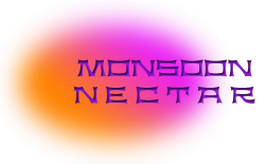
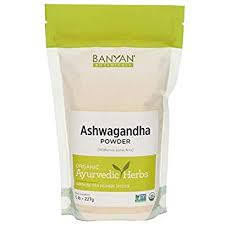
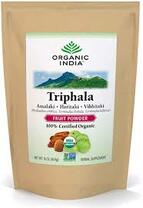
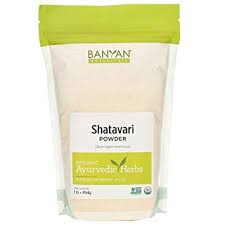
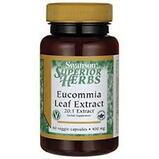
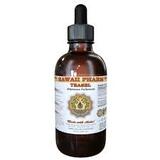
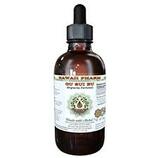

 RSS Feed
RSS Feed